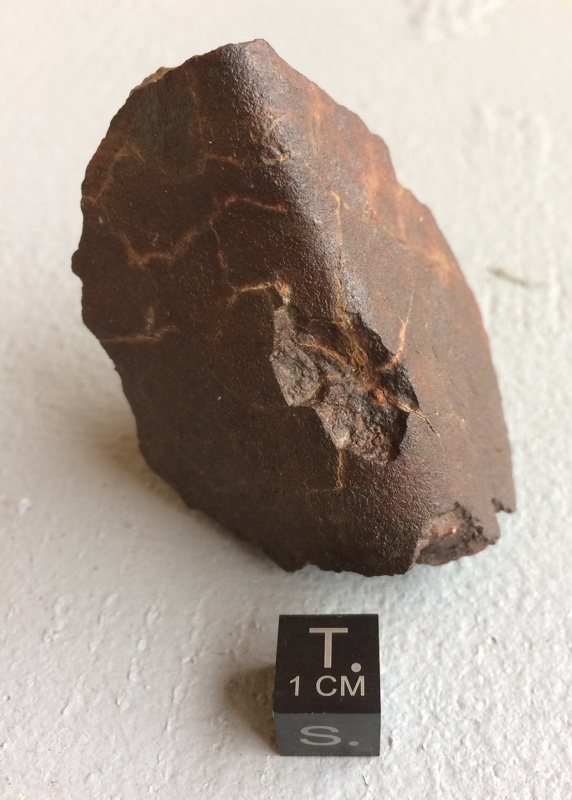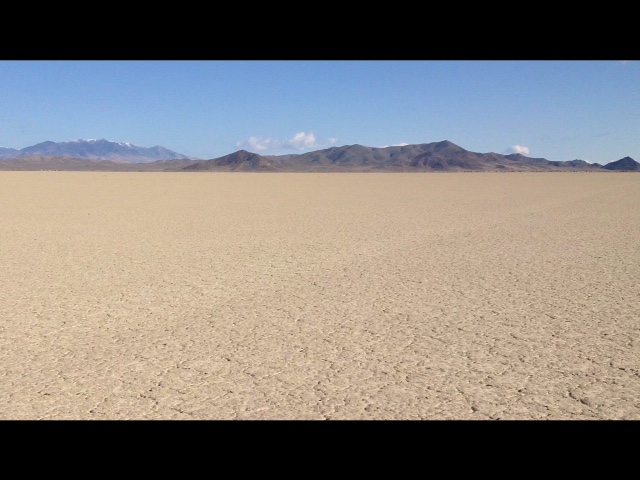-
Posts
1,186 -
Joined
-
Last visited
Content Type
Forums
Detector Prospector Home
Detector Database
Downloads
Posts posted by Lunk
-
-
I've noticed even the GPZ 14 coil will false when running the sensitivity high, especially in the high yield /difficult combo. Dialing down the sensitivity will fix the issue.
-
Thanks for posting the photos Tom. The acid etching you mentioned only works on the solid metal variety of meteorites, so all you need to do is file or grind a window into your specimen and sand it smooth. If your rock is a chondrite without metal grains, the window should show round chondrules similar to the photo:
These chondrules are small, typically less than a millimeter in diameter. If there are no chondrules, the only possibility left is an achondrite meteorite. These can only be definitively identified by laboratory chemical, petrologic and petrographic analysis. Here's a list of meteorite testing labs:
http://meteorite-identification.com/verification.html
Best of luck!
-
What an awesome day...WTG!
-
Holy schist that's a huge pile of gold...congrats to you and the claim owner!
-
24 minutes ago, DolanDave said:
How did the small pieces sound on your detector?
They sounded loud and clear Dave, there was no missing 'em!
-
Back in 2004 I stumbled upon a chondrite sitting on the desert pavement just west of Quartzsite, Arizona. I picked up 16 fragments within an area of 1 square meter. The meteorite was classified as the Diablo Pass L6 ordinary chondrite; details here:
Diablo Pass main mass:

Fast forward to today: I was passing through the area and decided to revisit the site. Someone had toppled the small stone monument I had erected to mark the find location, presumably to look for more pieces of the meteorite. Apparently they missed a few; after removing the monument stones, I proceeded to detect 10 small fragments from the area, many of which display remnant fusion crust. Their combined mass is just over 6 grams.
-
-
11 hours ago, Steve Herschbach said:
Hopefully I have some notice before my time is up, and if/when that happens you all will see all my nugget maps posted with notes before I go.
Careful Steve - your liable to start another gold rush!?
Thank you everyone for your thoughts and comments; I'm sure Smokey would have appreciated them.
-
I would hate to be the guy that was supposed to be guarding that thing. ?
-
Nice finds Mitchel, wtg!
-
Perhaps it was the GRG scoop?
-
The nugget shooting world lost a legend today: Smokey Baird of Lovelock, Nevada passed away after a battle with cancer. Rest in peace my friend.
-
On 3/22/2017 at 4:44 PM, tvanwho said:
I eyeballed/ picked up a rock that looks sorta like an Apollo space capsule from a farm field.It has a paper thin black crust and grey interior where a farmers plow broke it, but my magnet won't stick to it. How do I tell if it is or isn't a meteorite? There is a parking lot there now.
There are sparkles inside the rock. I hear there are stony meteorites that are not magnetic? I'll find the rock and post a photo later.
-Tom
Not to be a negative nellie here, but...
there are three things in the description of your stone that tell you it most likely is not a meteorite:
1. "It has a paper thin black crust and grey interior..." While most stony meteorites do have a dark fusion crust and lighter colored interior, the fact that your stone's exterior is black raises a red flag. Only a freshly fallen meteorite has a black fusion crust. Once the stone is exposed to the elements for any length of time, its exterior quickly oxidizes to a dark reddish brown color. A freshly fallen meteorite would have been immediately preceded by a fireball, sonic booms, etc. The chances of finding a fresh meteorite without eyewitness accounts and/or doppler radar data to guide you to it are next to zero. The black crust on your stone is most likely a manganese oxide coating.
2. "...my magnet won't stick to it." While there are stony meteorites that aren't attracted to a magnet, they are exceedingly rare. This alone tells you that it most likely is not a meteorite.
3. "There are sparkles inside the rock." Stony meteorites don't have crystalline components large enough to see without magnification and therefore never sparkle. Sparkly stones are definite meteorwrongs.
-
Happy birthday and congrats on a golden day!
-
Typically it makes sense to assign the user button to the function you find yourself changing the most during a detecting session. For me it's the Ground Balance Mode.
-
1 hour ago, Steve Herschbach said:
How do AKA "single frequency units include the "ground zone" in their detection range that other companies eliminate" and how does this make them superior?
If I'm interpreting that quote right, it sounds like AKA is saying that they have found a way to detect targets that fall within the ground balance "hole". I know that Minelab already did something like this with the SD-2100 pulse induction where essentially there were two detectors in one, each with its own ground balance control, thereby each one detecting targets that fell within the others ground balance hole. Perhaps AKA is doing something similar with VLF?
-
4 hours ago, NuggetWill said:
I too still dream of finding that really big nugget, this dream was initially just finding one, now I have all the steps just prior to finding it memorized...eg: initial broad signal, at least a foot down, I lift a full shovel of dirt that's really HEAVY....I sit next to it for a few minutes before uncovering it so I can let my mind run wild with all the possibilities and finally, I remove a bit of dirt from just a corner of the target and it gleams yellow in the sun......
I don't think I could sit there pondering before finding out how big that monster is...?
Welcome to the forum, Will!
-
My goal is to be the first person to detect on Mars, but if I only make it as far as the land downunder I'll be happy. ?
-
2 hours ago, hawkeye said:
Nice, very nice.
I am pretty sure you put in many hours to make those finds. Have you ever kept track?
Never kept track, Hawkeye. But I'm out there 6 or 7 hours a day every day though. The days go by fast, especially when I'm in the gold.
-
Neat! If it wasn't so small, I would say it wasn't natural.
-
Great looking gold, wtg!
-
G'day Bloodgold 2,
The bulk of the finds were made with the GPZ 14; it's still my go-to coil, as most of the gold in the areas I detect is small and relatively shallow. For example, the largest nugget pictured is 11 grams and was only 100 to 125 mil (that's 4 or 5 inches for us yanks). I've only used the GPZ 19 in spots where I've found nuggets at depth with the GPZ 14.
-
It's been a while since I posted any gold finds, so I thought I better let you all have a look at some of what the GPZ 7000 has found in the beat-up old placers of southwestern Arizona before making my way northward.
The mighty Zed:
Pictured is 3 ounces of the good stuff.
It was unseasonably cool and wet this winter, and is just now warming up to the temperature that it should have been a month ago. Not complaining...just saying. ?
Also saw a few critters.
The weather has been so perfect lately that I really don't want to leave.
Even mom got into the action this winter after a 4 year hiatus; her story here:
http://www.minelab.com/usa/go-minelabbing/success-stories/she-s-a-gold-digger
Well, until next winter, so long sunny AZ!?
-
2 hours ago, kiwijw said:
Are they on the way to Todd Hoffman? (Gold Rush Alaska oppss sorry Oregon, oh crickey sorry. Colorado)
 Hard to keep up.
Hard to keep up.
Good luck out there
JW

Let's not forget about Peru, Chile and Guyana...?



GPZ 19" Coil Falsing
in Minelab Metal Detectors
Posted
I got tired of waiting for a skid plate to become available here in the states, so I just cut one out of a cheapo Walmrt storage container and slapped it onto the coil. It's a little softer plastic than polycarbonate, but is thick enough to last forever.